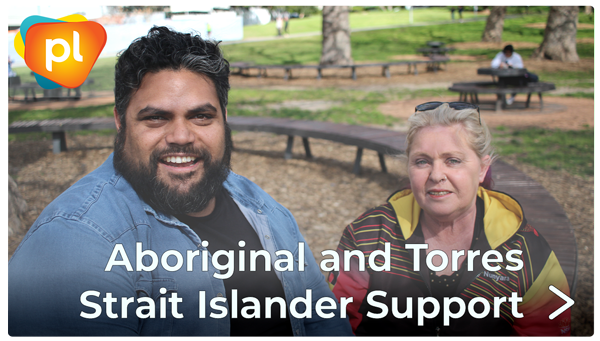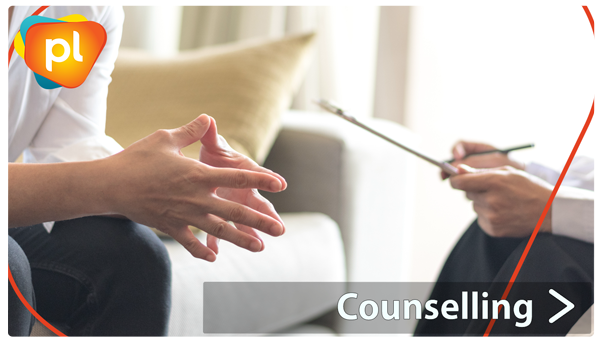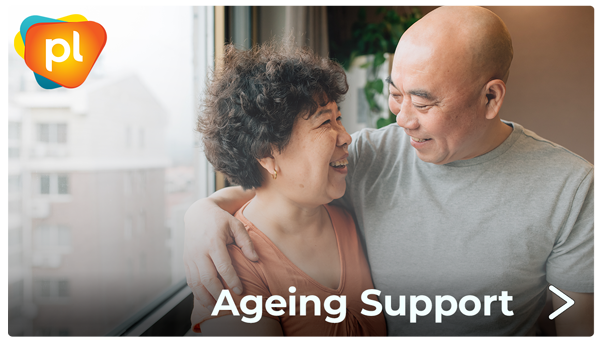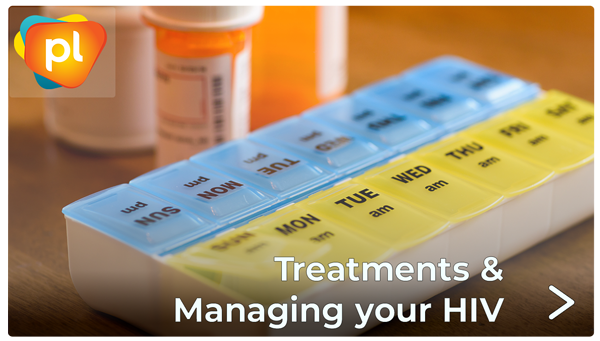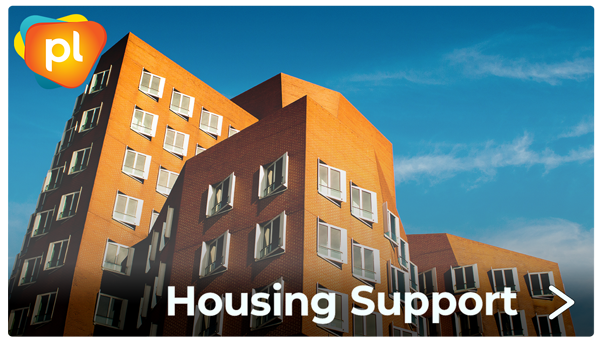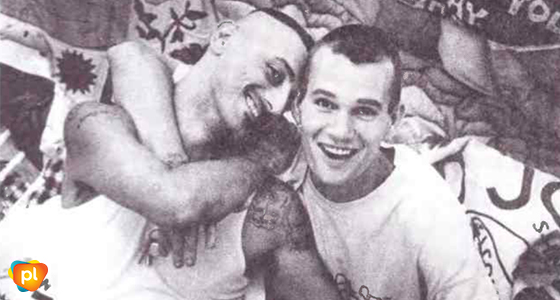
Rodney Junga Williams 18 February 1962 – 24 November 2011
Aboriginal and Torres Strait Islander readers are warned that this article contains images of deceased persons. This interview was originally published in Talkabout Edition #176, March-April 2012.
It is with great sadness that we have lost, but not forever, one of our true fighters for Aboriginal and Torres Strait Islander people’s rights in the health and HIV arenas. Sadly, on 24 November, 2011, we lost Rodney Junga Williams, a proud Nurrunga-Kaurna man, after his relatively short battle with cancer. Relatively short, as he managed his HIV successfully throughout the last 27years. He has left a legacy that will be long upheld, one of a fighter who in the beginning and to the end stood up and spoke up about the importance of inclusivity within the response to HVIAIDS for Aboriginal and Torres Strait Islander people. His pride was out of this world, for his family, his friends, his culture and the communities of both Aboriginal peoples and those affected by HIV. His laugh was infectious, his generosity was welcoming, his activism was sincere, sensitive and difficult. He was an instigator, an innovator, some say troublemaker and others say peacemaker – we don’t care, we loved him for who he was. His activism and those of others in the community paved a way for all of us to maintain vigilance regarding HIV in our communities.
His activism and commitment is well described in his final interview with Kathy Triffitt (in August 2011). It’s what drives us to do what we do. We understood the difficulties, we stood proud with him even in the darkest of hours and although he has left this place we know he will always be looking down upon us.
We say thank you Rodney Junga Williams, son, brother, father, uncle, cousin and friend to many. Thank you for being who you were, for doing what you did. Thank you for your passion and your trailblazing. Your last interview so well encapsulates your longstanding commitment to humanity. We will see you again, wait for us! Miss you, our brother! Nukunya.
– James Ward and Neville Fazulla, 2011IMAGE: Talkabout, August 1992, Rodney Junga-Williams (left) with Warren Griffiths. Photo: Leon Morris
Coming out in Talkabout, August 1992
I was looking at a photo from my very first interview in Talkabout (August 1992), when I came out publicly as an Aboriginal man with HIV. Coming out was in some ways the culmination of a long process of coming to terms with being positive and gay. I’ve had such a public life living with HIV, travelling all over the world speaking about my experiences. I’ve been interviewed many times and my face has appeared in a variety of magazines and campaigns. Twenty years later I’m not dying from an AIDS-related condition, but cancer.
I gave my first interview to Talkabout so I wanted to give my last one to the magazine and to Positive Life NSW, which I have a lot of respect for.
Growing up in South Australia
I’m one of the stolen generation. My family come from South Australia originally – the Yorke Peninsula, where the Aboriginal people call themselves Nungas. My tribes are Narrunga and the Kaurna. They were moved into the district of Gawler, which was on the fringes of Adelaide. To work in Adelaide we had to wear a dog tag, as we called it.
We lived in my grandmother’s house with my mother’s sisters and brothers. The Department of Community Welfare visited one day when my mother wasn’t home. Representatives found the living conditions inappropriate for a five-month-old baby and removed me from the house that day.
I was put into foster care and was eventually adopted into a non-Aboriginal family. I grew up in a suburban part of Adelaide. I had a very different experience as a member of the stolen children. My birth mother was allowed access to visit me, whereas that was not the case for others. Once they were taken by welfare, they were taken. My adopted parents were Anglican Methodist and wanted me to have contact with my family. This didn’t happen weekly or monthly – maybe a couple of times a year.
At the time, I didn’t know I was Aboriginal. I also didn’t know who these people were. I just knew them as friends of my parents. It wasn’t until I was 10 years old that I was told I was Aboriginal and the people visiting me were my mother, brothers and sisters. That was a defining moment in my life.
At the age of 15 I left and lived with friends on the coast. I gradually found my way to Sydney around the time the first cases of AIDS were reported. People didn’t know very much about it, especially in Adelaide. I became involved in organising the first Aboriginal Solidarity group to visit Nicaragua in 1988. I was the first out Aboriginal gay to work there, but I was still in the closet about HIV/AIDS. It was a touchy subject in the Aboriginal community.
Silence = Death
I was diagnosed in 1985. It was definitely a key moment being told, as a young person in your early 20s, that you’ve got AIDS. It changed everything. I was given my diagnosis and a death sentence and told to enjoy what time I had (approximately two years). It changed my behaviours and attitudes to life in general. I went from someone who had hopes, dreams and visions to nothing. It was about five years after my diagnosis I realised that maybe I’m not going to die.
As more information became available, there was a slight hope that we could have a life. A lot of the gay men I socialised with at the time were the first generation of AIDS activists in Australia putting a voice and face to this pandemic. I needed to be a part of that. One of the greatest slogans to come out of the movement was SILENCE = DEATH. This is as true today as it was then. If you keep your mouth shut and don’t say anything, that’s the worst thing you can do. I found myself going to lots of meetings and getting access to information that was more factual and optimistic than anything the media published. I became more and more aware of the media lies and distortions.
The information we generated was about removing fear, empowering people and giving them hope. The media became the subject of our criticism. We challenged the hysteria and misconceptions generated, for instance, the notion that some people were ‘innocent’ victims of AIDS, while gay men weren’t. We also challenged the depictions of passive ‘AIDS victims’ or, on the other hand, infectious ‘AIDS carriers’.
Highlights and milestones
One of the highlights is my involvement in the development of NPLWAC (National People Living With AIDS Coalition) in 1990. This became the National Association of People Living with HIV/AIDS (NAPWA) in the early ’90s. It was the first national voice for people living with HIV. To see that happen was definitely a very proud moment. We were moving through the fear and becoming stronger. There was so much stigma and fear around HIV. Along with a strong political direction came positivity and hope. HIV-positive people were now working in local and national government. All of a sudden there was access to this whole enterprise of organisations and people. That was a pretty incredible thing to not only witness but to be a part of. It was time for people to stand with us and not allow us to be marginalised by AIDS.
Campaigns like the Grim Reaper (1987) by the National Advisory Committee on AIDS (NACAIDS) motivated us to get into health promotion and to produce our own responses. We focused on living with HIV, dispelled the myths and challenged the fears. We built a public profile allowing people living with HIV/AIDS a human face, as opposed to what we were seeing in the media. We were living with HIV/AIDS, not dying. Aboriginal social and support groups started to grow nationally. What I witnessed was a community that grew and evolved and actually made me so proud to be a part of. Responses to HIV/AIDS were driven by ordinary people, friends and families.
Fit for a Queen
As HIV-positive gay men, we wanted to reclaim our sexuality. For me, that was tied into the injecting drug users (IDU) movement. We all worked together. Back then there wasn’t such a separation in ideology and organisational structure. Once it was identified that HIV was passed on through needles, we organised the first gay needle exchange at Mardi Gras. We wore at-shirt with the slogan FIT FOR A QUEEN. We had a caravan set up where people came in to get safe injecting equipment. We were a group of gay men who used drugs and had sex parties. We also set up the first ever poz-only space with a needle exchange in one room. We had people on site to show guys how to inject safely if they needed a hand. There was lots of poz on poz sex. It was the first
time guys could be free to be themselves and not haveto worry about the fear of disclosure and of negotiating sex around HIV status. Poz people could get together and feel safe and free in that environment. It was very empowering. We were quite radical back then. It was an underground movement which became a distinct part of gay culture.
It’s all about choice: being able to make decisions and choices not only about sex but also how we live as people with HIV.
‘Knowledge will help us to survive’
We needed to make information accessible to our communities. I was the only Aboriginal person, at that time, and a lot of people came and spoke to me. I worked across many boundaries and borders – HIV, gay and IDU communities, including my own black community. When I returned to Adelaide from Sydney I worked with Nungays, the first Aboriginal gay and lesbian support group in South Australia, which trained people who worked with young Aborigines. We brought mothers and fathers, aunties and uncles together. In 1994 we coordinated and ran the first Anwernekenhe national HIV/AIDS and sexual health conference for gay men and sistergirls at Hamilton Downs, Alice Springs. Being one of the founding members was definitely a highlight. It still operates now, but under a different agenda. I’ve been blessed with many highlights in my life.
In 1992, I helped set up NUHIT (Clean Needle Program) at the AIDS Council South Australia (ACSA) and was elected the first Aboriginal president of People Living with HIV/AIDS South Australia in 1999. I also coordinated BlackN Out, the first Aboriginal Arts Festival which was part of FEAST (community arts festival for the lesbian and gay community in Adelaide) before returning to Sydney to work in Aboriginal health. Being the first Aboriginal gay man to speak at an international conference on AIDS was pretty amazing as well.
As the Aboriginal spokesman for the National Association of People Living With HIV/AIDS (NAPWA), I convened, supported and led their Aboriginal and Torres Strait Islander response in policy, advocacy, education and prevention and gathered grassroots community support. As Co-convenor of PATSIN (Positive Aboriginal and Torres Strait Islander Network), I also helped in getting Two Songs for Healing recorded.
This was our first fundraising project of awareness, dedicated to all those who lived, loved and lost loved ones to HIV/AIDS. The songs are an acknowledgement of our collective past, a celebration of our survival, our learning and our deep connections to all that is past, all who we have lost and all who remain.
Although HIV/AIDS was relatively new to Aboriginal people, its social symptoms – grief, discrimination and stigma – were not. Aboriginal communities were going through their own multiple deaths, with families losing dozens of people from every healthcare issue, drugs and suicide. It was as if a big cloud descended across us all. I believed that knowledge would help us survive.
With this in mind I wrote Aborigine Must Be Free: Let’s Control HIV, which was published in 1992. This was the first HIV/AIDS information and educational booklet of its kind in South Australia, both culturally appropriate and sensitive. It was soon distributed nationally and eventually had three editions published. The process of putting it together came from Aboriginal people both infected and affected, young and old, straight and gay.
‘HIV doesn’t discriminate …people do’ (1992/93)
With members of my family, I was involved in the ANCA (Australian National Council of AIDS) national campaign, HIV doesn’t discriminate . . . people do (1992/93). It was the first campaign produced by positive people in the world. We were all people living with HIV, not actors. By presenting our stories and a public face of living with HIV, we challenged people to rethink their attitudes. We stood up for our rights.
I’ve said many times before: gay men are some of the most resilient people you will meet. The way we responded to this pandemic and continue to respond to the many issues that confront us as LGBTI people is something we shouldn’t take for granted. It’s not easy putting yourself out there on a daily basis.
I was at the forefront of a movement that was changing people’s ideologies and lives on a daily basis. I think the response to HIV has changed the way people live their lives. It has changed the way people have sex and talk about it. It has changed the way people think about drug use. I don’t think that anybody thought that it would change the world as much as it has.
Changing face of HIV
HIV has a different face now. In many ways we’ve gone back to ‘normality’; many are getting on with their lives and their day-to-day routines, like working. In 1996, with the advent of new treatments, people’s lives started to change. There was a shift from dying to preparing to live, with no discussion on how to do this. Some people still haven’t been able to get their head around that. Because they lived for a long time thinking they were going to die, it’s been too hard to change/adapt. Because I was active in the community and working, I was able to make that transition a lot easier and maintain it. In Australia, HIV isn’t a death sentence any more.
There are programs now where people can be retrained to go back to work. That should have happened around 15 years ago. The best thing anyone can do is to keep living. Be active, whether it’s working, volunteering or just being part of life or the world. If people lock themselves away in their homes and in the past, they will become depressed. Depression is an issue for people living long-term with HIV and we don’t talk about it. It’s really important they get information and speak to their doctor because that will change their life. Depression can be treated. I don’t know why in the community we’ve overcome this horrible spectre of AIDS and yet there are still taboo issues like drug use and mental health.
Gift of friendship and love
I’ve had some of the most amazing experiences over the past 18 months. I’ve experienced so much beauty in this world. Unfortunately it wouldn’t have happened if I didn’t have cancer. The good has been good and the bad has been pretty bad.
The next two to three months is about being with the people I love, my close friends and family. I also have my blood family in South Australia. I’ve been very blessed that I’ve had some amazing friends who have stood by me. The radiologist at St. Vincent’s, the nurse down at IBAC (Immunology B Ambulatory Care), the staff of Sacred Heart Hospice and my HIV doctor of 10 years have provided the most amazing support and guidance throughout this journey. My HIV doctor has been my biggest support. I want to acknowledge their gift of friendship and love.
I was very sick from chemotherapy. My goal was to go over to California and London to see two of my oldest friends and to say goodbye. Through the healthcare profession, as well as my friends, I was able to do that trip. Now it’s about letting my life be as organic and natural as possible and enjoying the time left with the people I care about.
I want to be remembered as someone who didn’t shut up, someone who stood up and faced the fear. It’s always been about people that have no voice, access and equity ensuring the Aboriginal voice is heard. I feel very proud to have been a part of the HIV/AIDS movement and to have been friends with the first generation of activists.
My HIV has been and continues to be manageable. I have 500 t-cells, undetectable viral load and yet I have cancer and two months to live. Who would have thought that I would not die from an AIDS-related condition; that touches my funny bone. The irony is too much (laughs).
– Rodney Junga Williams, proud Nurrunga-Kaurna man

